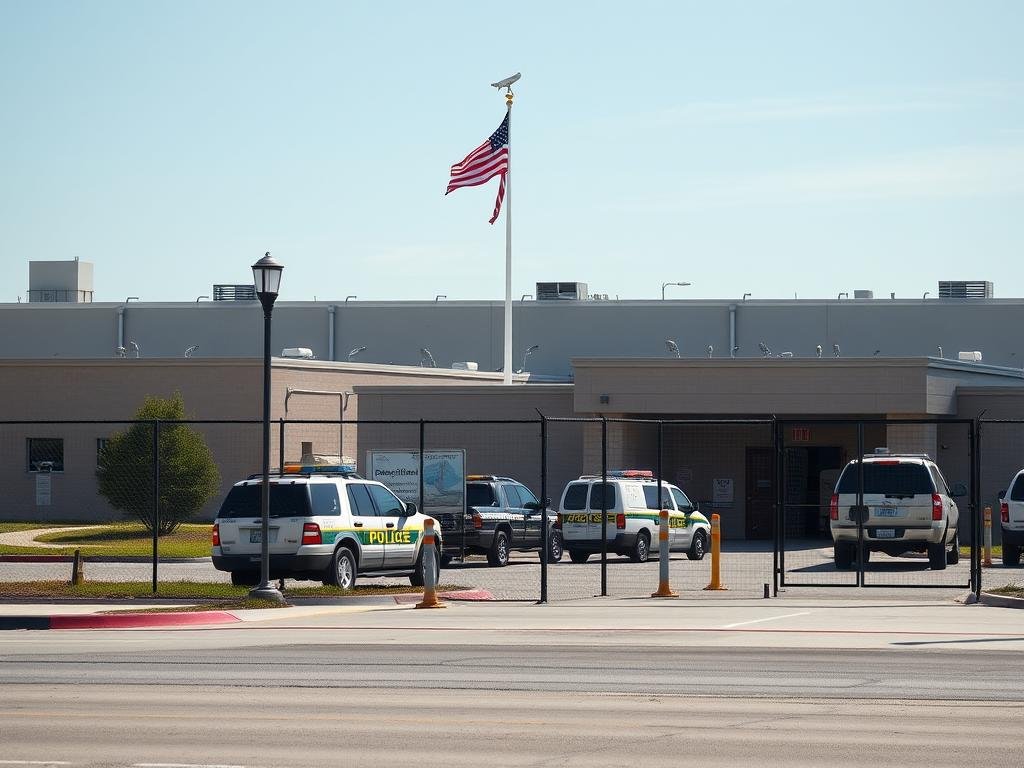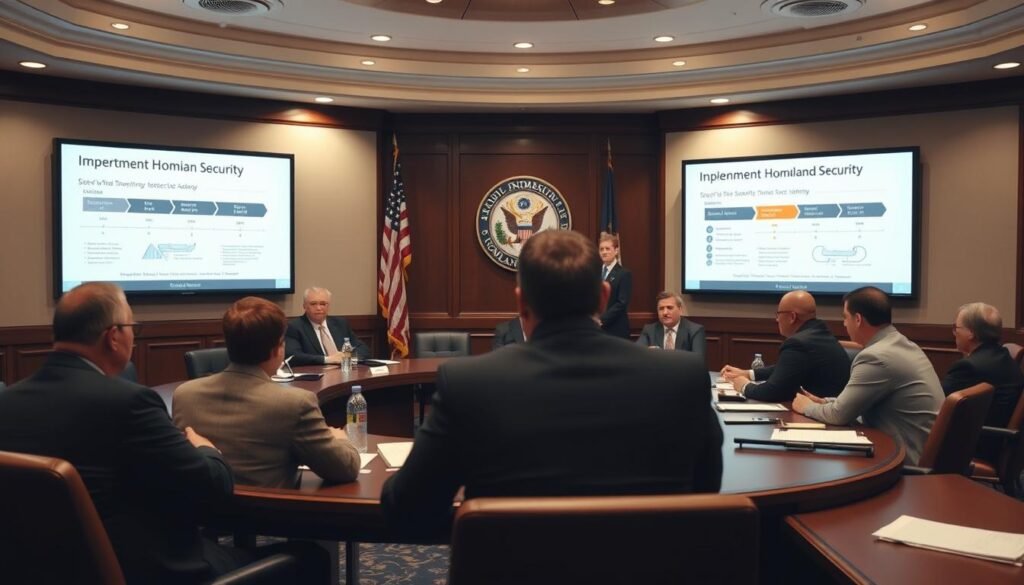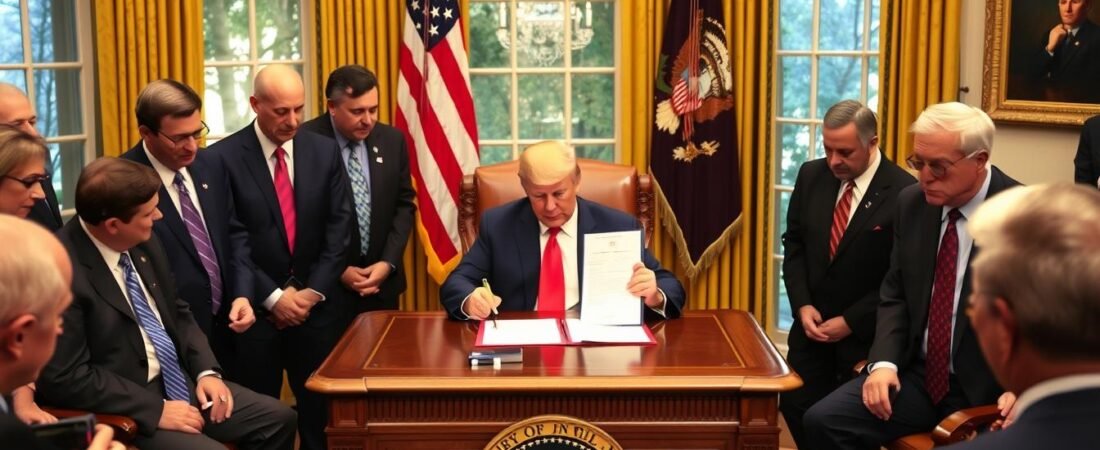President Trump’s “One Big Beautiful Bill” represents a historic shift in U.S. immigration policy, with far-reaching implications for family-based visas, enforcement priorities, and the broader immigration system. With approximately $170 billion allocated for immigration enforcement and border security, this legislation marks one of the most significant investments in these areas in recent history.
As the bill moves from legislative text to implementation, understanding its provisions and potential impacts is crucial for immigrants, their families, policy analysts, and anyone concerned with the future of American immigration. This analysis examines the key components of the bill and what they mean for various visa categories.
Key Funding Allocations in Trump’s Big Beautiful Bill
The legislation, officially titled the “One Big Beautiful Bill Act,” allocates unprecedented resources toward immigration enforcement and border security. Understanding these funding priorities provides insight into the administration’s approach to immigration policy.
| Funding Category | Amount | Purpose |
| Border Wall Construction | $46.5 billion | Complete construction of physical barriers along the southern border |
| Immigration Detention | $45 billion | Expand detention capacity to approximately 116,000 beds |
| ICE Personnel & Operations | $30 billion | Hire additional ICE agents, transportation costs, facility maintenance |
| State/Local Reimbursements | $13.5 billion | Reimburse states and localities for immigration enforcement activities |
| Border Security Initiatives | $10 billion | General border security operations and technology |
| CBP Facilities | $5 billion | Construction and maintenance of Customs and Border Protection facilities |
| Immigration Courts | $3 billion | Expand court capacity and hire additional immigration judges |
White House border czar Tom Homan emphasized the importance of these allocations, stating, “The more beds that we have, the more bad guys we arrest.” This perspective underscores the administration’s focus on detention and deportation as central components of its immigration strategy.

Immigration Enforcement and Detention Expansion
A central component of Trump’s Big Beautiful Bill is the significant expansion of immigration enforcement capabilities. The legislation provides funding to hire 10,000 new ICE agents and increase detention capacity to hold approximately 100,000 individuals—a substantial increase from current levels.
Detention Capacity Expansion
The bill allocates $45 billion specifically for immigration detention centers, addressing what the administration describes as overcrowding in existing facilities. According to estimates from the American Immigration Council, this funding could expand detention capacity to “at least 116,000 beds.”
Critics and supporters alike acknowledge that this expansion represents a fundamental shift in how the U.S. approaches immigration enforcement. Kathleen Bush-Joseph, a policy analyst at the Migration Policy Institute, noted that the bill will “absolutely supercharge immigration enforcement over time, but it’s not gonna happen overnight.”
End of “Catch and Release”
The administration has explicitly stated its intention to end the policy known as “catch and release,” which allows migrants to be released from detention while awaiting immigration court hearings. The expanded detention capacity funded by the bill is designed to facilitate this policy shift.
Bush-Joseph expressed concerns about this approach, noting that “individuals in immigration custody tend to face greater challenges with communication, obtaining counsel, interpretation, and understanding their rights.” She added that “the nature of immigration detention in and of itself is that it’s harder for people to win relief in immigration court.”
Supporters’ Arguments
- Increased detention capacity will reduce overcrowding in existing facilities
- More ICE personnel will improve enforcement of existing immigration laws
- End of “catch and release” will ensure migrants appear for court hearings
- Expanded enforcement will deter illegal border crossings
Critics’ Arguments
- Mass detention is costly and may violate humanitarian standards
- Detained individuals face greater challenges accessing legal representation
- Alternatives to detention are more cost-effective and humane
- Resources could be better allocated to address court backlogs

Border Wall and Security Measures
The Big Beautiful Bill provides approximately $46.5 billion to complete Trump’s signature border wall project, along with additional funding for Customs and Border Protection facilities ($5 billion) and broader border security initiatives ($10 billion).
This substantial investment comes at a time when border crossings have reached their lowest levels in decades. According to preliminary figures from the Department of Homeland Security, June saw slightly over 6,000 apprehensions at the southern border—a dramatic decrease from previous years.
“If we wait until 250,000 people arrive per month, it’s going to be too late,” argued Andrew Arthur, a fellow at the Center for Immigration Studies, referring to the peak of monthly arrests under former President Joe Biden.
The bill also allocates $13.5 billion to reimburse states and local governments that have engaged in immigration and border-related enforcement activities. This provision appears designed to reward states that took independent action on immigration enforcement during the previous administration.

Changes to Immigration Fees and Processes
Trump’s Big Beautiful Bill introduces significant changes to immigration fees, potentially creating new financial barriers for immigrants navigating the system. Among the most notable changes is a new $100 minimum fee required to apply for asylum—reduced from the $1,000 initially proposed in the House version after the Senate parliamentarian determined the higher fee did not meet budget reconciliation rules.
Heidi Altman, vice president of policy at the National Immigration Law Center, expressed concern that these new or increased fees will put an “unaffordable price tag on due process” for many immigrants. According to Altman, one of the most significant increases is the fee to appeal an immigration judge’s decision, which jumps from the current $110 to $900.
“Many of these fees are going to become barriers or obstacles to people making their way through the very basic requirements of the immigration court system,” Altman noted.
Supporters of the fee increases argue they are necessary to offset processing costs. Andrew Arthur from the Center for Immigration Studies stated, “It’s not unreasonable to expect them to pay at least $100 for their asylum application if only to cover a portion—and a very small portion of that—of the processing and adjudication fees.”

Restrictions on Safety Net Programs
The legislation makes significant changes to eligibility requirements for various safety net programs, restricting access based on immigration status. The bill limits access to health coverage under Affordable Care Act marketplaces and Medicare for a range of lawfully present immigrants, including refugees, asylees, and those with other humanitarian protections.
Similar restrictions are extended to federal funding for Medicaid and the Children’s Health Insurance Program. Shelby Gonzales, vice president for immigration policy at the Center on Budget and Policy Priorities, noted that “The truth is that already a lot of people are barred from insurance just based off of not having the right kind of immigration status. The changes that are made in this law go even further.”
The bill also restricts eligibility for the Supplemental Nutrition Assistance Program (SNAP) and modifies the Child Tax Credit. Currently, only a child needs to have a Social Security number to qualify for the Child Tax Credit. Under the new legislation, at least one parent must also have a Social Security number.
“The child tax credit will be effectively cut off for kids with two undocumented parents. That’s a significant amount of money that assists with the wellbeing of citizen children and it will be gone.”
Those remaining eligible for these public benefits include green card holders who have completed the five-year waiting period, certain Cubans and Haitians, and individuals residing in the U.S. under the Compacts of Free Association, which includes people from Micronesia, Palau, and the Marshall Islands.

Immigration Court System Funding
The Big Beautiful Bill allocates over $3 billion to the Justice Department for immigration-related activities, including the hiring of more immigration judges to address the growing case backlog. As of April 2025, the backlog stood at nearly 4 million cases, according to the latest available data.
While the additional funding is promising, Bush-Joseph from the Migration Policy Institute noted that the bill caps the number of judges at 800, which may fall short of what’s needed to effectively address the backlog. She pointed to a 2023 analysis by the Congressional Research Service, which estimated that over 1,300 judges would be necessary to eliminate the backlog over the next several years.
“To my mind, immigration courts will likely continue to struggle to keep up because the backlog is so huge,” Bush-Joseph concluded.
The court system funding represents a significantly smaller portion of the overall immigration budget compared to enforcement agencies like ICE and CBP. This imbalance has raised concerns about whether the judicial infrastructure will be able to keep pace with increased enforcement activities.

Potential Impacts on Family-Based and Other Visa Categories
While the Big Beautiful Bill focuses heavily on enforcement and border security, its implementation will have significant implications for various visa categories, particularly family-based visas. The legislation’s emphasis on enforcement and detention, combined with new fee structures, creates a challenging environment for family reunification through the immigration system.
How will the bill affect processing times for family-based visas?
The legislation’s focus on enforcement rather than processing efficiency suggests that family-based visa applications may face longer wait times. While the bill does provide some funding for immigration courts, the emphasis on detention and deportation could divert resources from visa processing operations.
Will the new fee structure impact family reunification?
The increased fees across various immigration applications will create additional financial barriers for families seeking reunification through the legal immigration system. The substantial increase in appeal fees (from $110 to $900) is particularly concerning for family-based cases that may require administrative appeals.
How does the bill address the visa backlog?
The legislation does not contain specific provisions to address the family visa backlog, which currently extends to decades for some categories. The focus on enforcement rather than processing suggests the backlog may worsen under this policy approach.
Immigration experts note that the bill’s implementation will largely determine its impact on specific visa categories. The Department of Homeland Security and State Department will need to issue guidance on how the new funding and policy priorities will affect visa processing operations.

State-Level Impacts and Responses
The Big Beautiful Bill’s $13.5 billion allocation for state reimbursements highlights the role of states in immigration enforcement. This funding is specifically targeted at “states that fought against the Biden administration’s open border,” according to official statements, suggesting a reward mechanism for states that implemented independent immigration enforcement measures.
Texas
As a border state that invested heavily in its own enforcement operations, Texas stands to receive significant reimbursement under the bill. The state’s Operation Lone Star deployed state troopers and National Guard members to the border region and constructed barriers along portions of the Rio Grande.
Florida
Florida implemented state-level immigration enforcement measures, including restrictions on employment and transportation of undocumented immigrants. The state also allocated resources to transport migrants to other states, actions that may qualify for federal reimbursement under the new legislation.
California
As a state with sanctuary policies limiting cooperation with federal immigration authorities, California may face challenges under the new enforcement regime. The bill’s emphasis on the 287(g) program, which empowers state and local law enforcement to assist federal immigration officers, creates potential conflicts with state laws.
The bill’s full funding for ICE’s 287(g) program represents a significant shift in federal-state immigration enforcement relationships. This program, which deputizes local law enforcement to perform certain immigration functions, had been scaled back under previous administrations but now receives renewed emphasis and resources.

Implementation Timeline and Challenges
While the Big Beautiful Bill provides unprecedented funding for immigration enforcement, experts note that implementing its provisions will take time. Kathleen Bush-Joseph of the Migration Policy Institute observed that the bill will “absolutely supercharge immigration enforcement over time, but it’s not gonna happen overnight.”
Key implementation challenges include:
- Recruiting and training 10,000 new ICE agents
- Constructing new detention facilities to accommodate the expanded capacity
- Building additional sections of border wall, particularly in challenging terrain
- Hiring and training new immigration judges within the 800-judge cap
- Developing systems to implement and enforce new eligibility restrictions for safety net programs
The Department of Homeland Security has indicated that implementation will be phased, with Secretary Kristi Noem stating that the funding will “help the Department of Homeland Security and our brave law enforcement further deliver on President Trump’s mandate to arrest and deport criminal illegal aliens and MAKE AMERICA SAFE AGAIN!”
The bill’s implementation timeline coincides with a period of historically low border crossings, with June 2025 recording just over 6,000 apprehensions according to preliminary DHS figures. This represents the lowest level in decades, raising questions about the timing and scale of the enforcement expansion.

Conclusion: The Future of Immigration Under the Big Beautiful Bill
President Trump’s Big Beautiful Bill represents a historic investment in immigration enforcement and border security, with far-reaching implications for the U.S. immigration system. With approximately $170 billion allocated across various enforcement initiatives, the legislation signals a fundamental shift in immigration priorities.
For family-based and other visa categories, the bill’s implementation will likely create new challenges through increased fees, enforcement priorities, and resource allocation. While the legislation does not directly modify visa categories, its emphasis on enforcement over processing efficiency suggests potential delays and complications for legal immigration pathways.
As implementation begins, stakeholders across the immigration system—from applicants and their families to attorneys, employers, and advocacy organizations—will need to closely monitor policy developments and adjust their strategies accordingly. The coming months will reveal how quickly and extensively the bill’s provisions translate into operational changes at the border, in detention facilities, and throughout the immigration system.

Stay Informed About Immigration Policy Changes
Immigration policy is constantly evolving. Subscribe to our newsletter to receive expert analysis of the latest developments, policy changes, and their implications for various visa categories. Our team of immigration policy experts provides clear, accurate information to help you navigate the complex immigration landscape.
